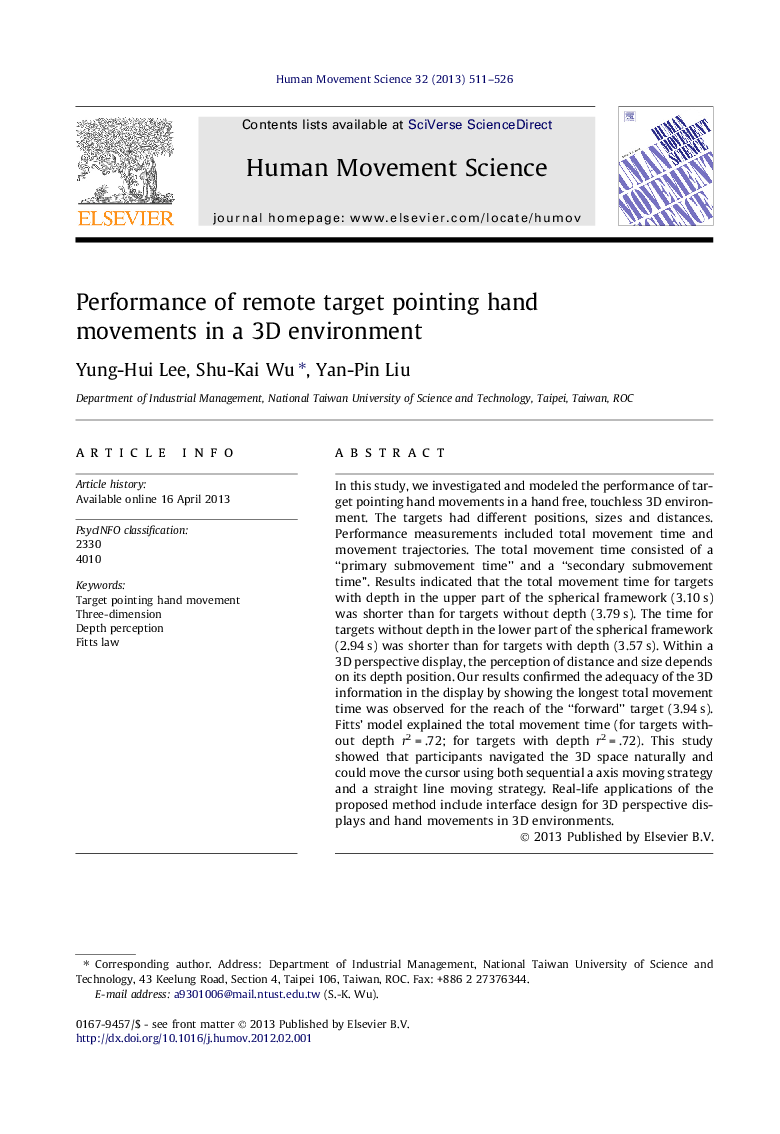| Article ID | Journal | Published Year | Pages | File Type |
|---|---|---|---|---|
| 928403 | Human Movement Science | 2013 | 16 Pages |
In this study, we investigated and modeled the performance of target pointing hand movements in a hand free, touchless 3D environment. The targets had different positions, sizes and distances. Performance measurements included total movement time and movement trajectories. The total movement time consisted of a “primary submovement time” and a “secondary submovement time”. Results indicated that the total movement time for targets with depth in the upper part of the spherical framework (3.10 s) was shorter than for targets without depth (3.79 s). The time for targets without depth in the lower part of the spherical framework (2.94 s) was shorter than for targets with depth (3.57 s). Within a 3D perspective display, the perception of distance and size depends on its depth position. Our results confirmed the adequacy of the 3D information in the display by showing the longest total movement time was observed for the reach of the “forward” target (3.94 s). Fitts’ model explained the total movement time (for targets without depth r2 = .72; for targets with depth r2 = .72). This study showed that participants navigated the 3D space naturally and could move the cursor using both sequential a axis moving strategy and a straight line moving strategy. Real-life applications of the proposed method include interface design for 3D perspective displays and hand movements in 3D environments.
